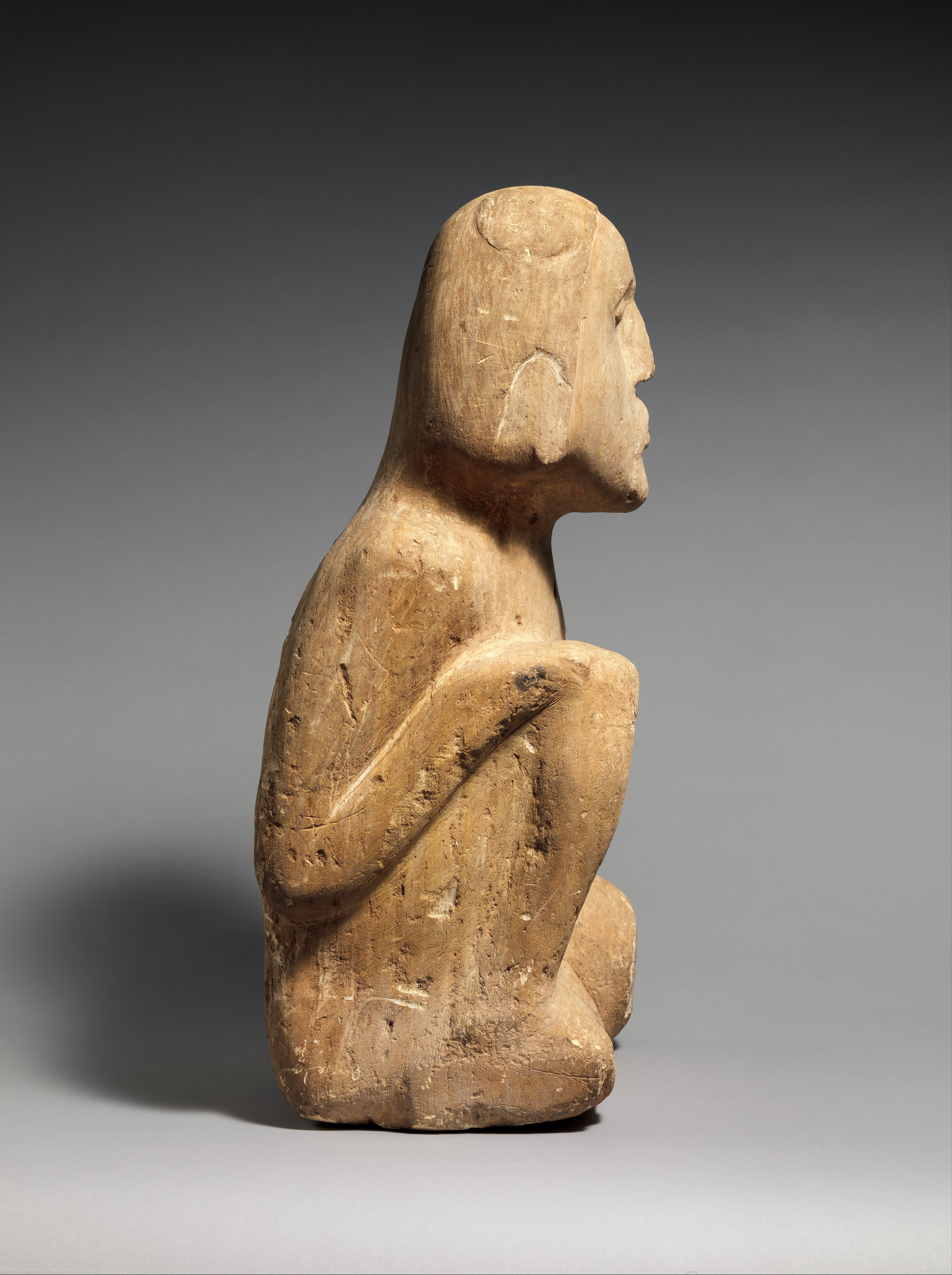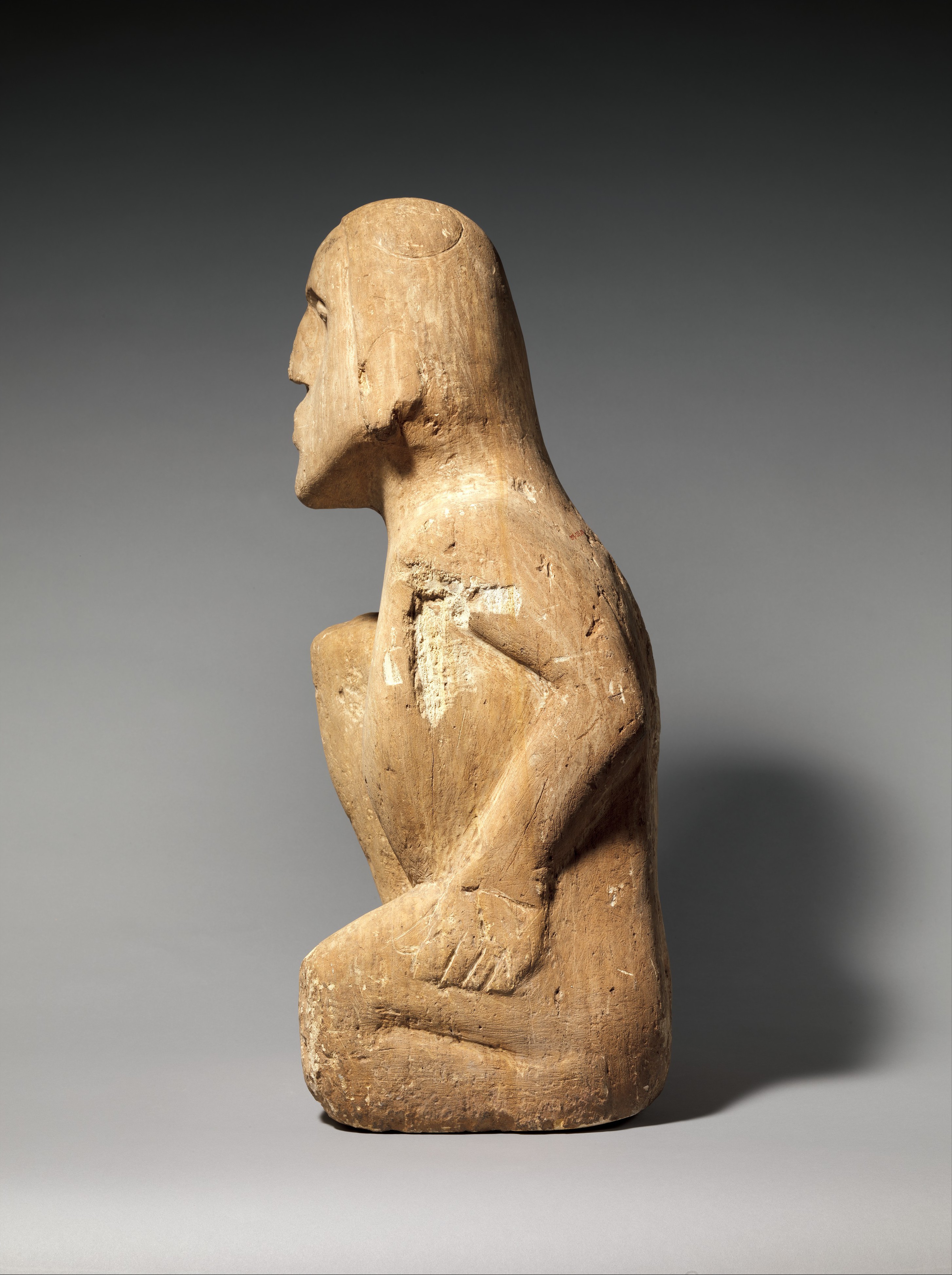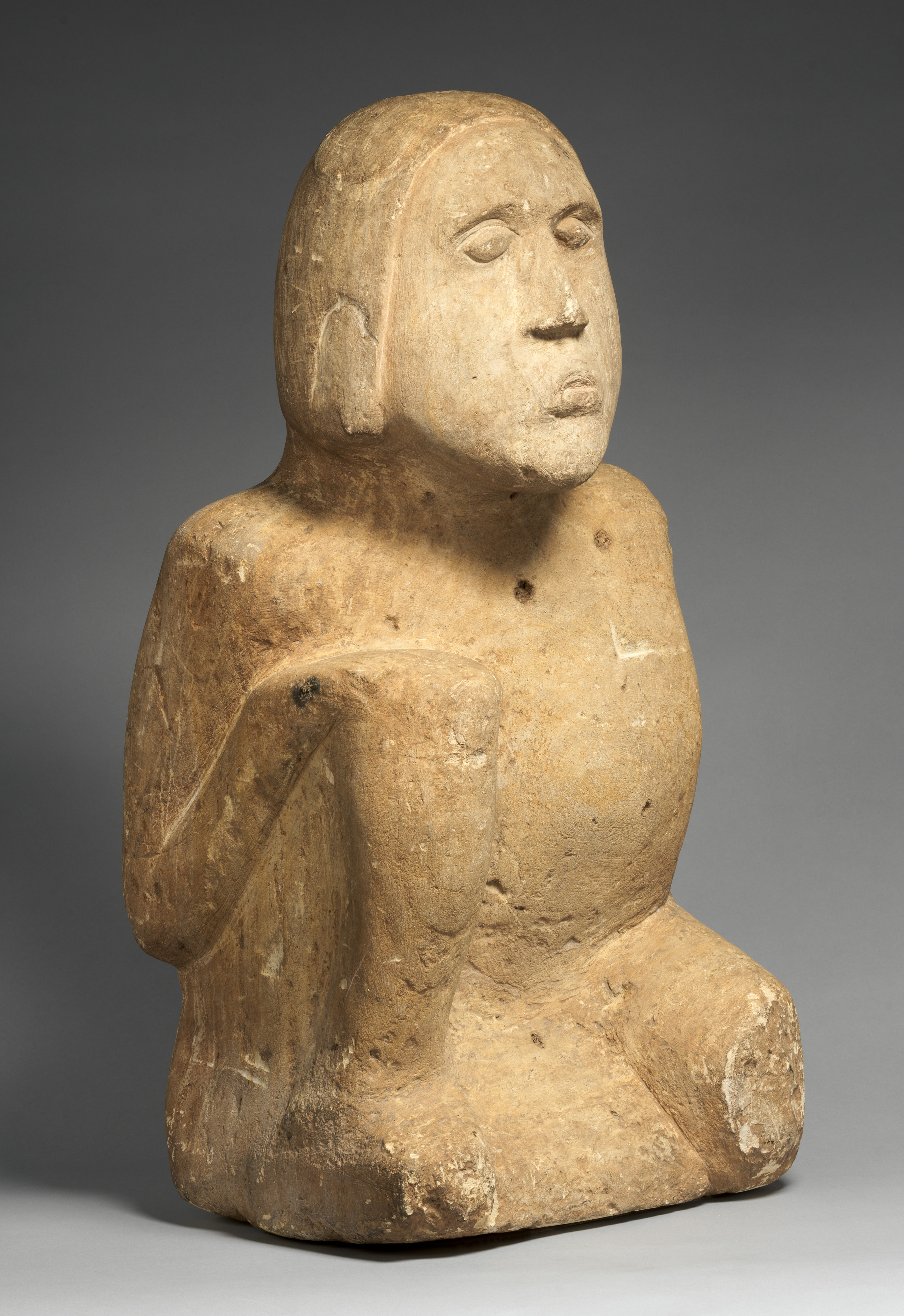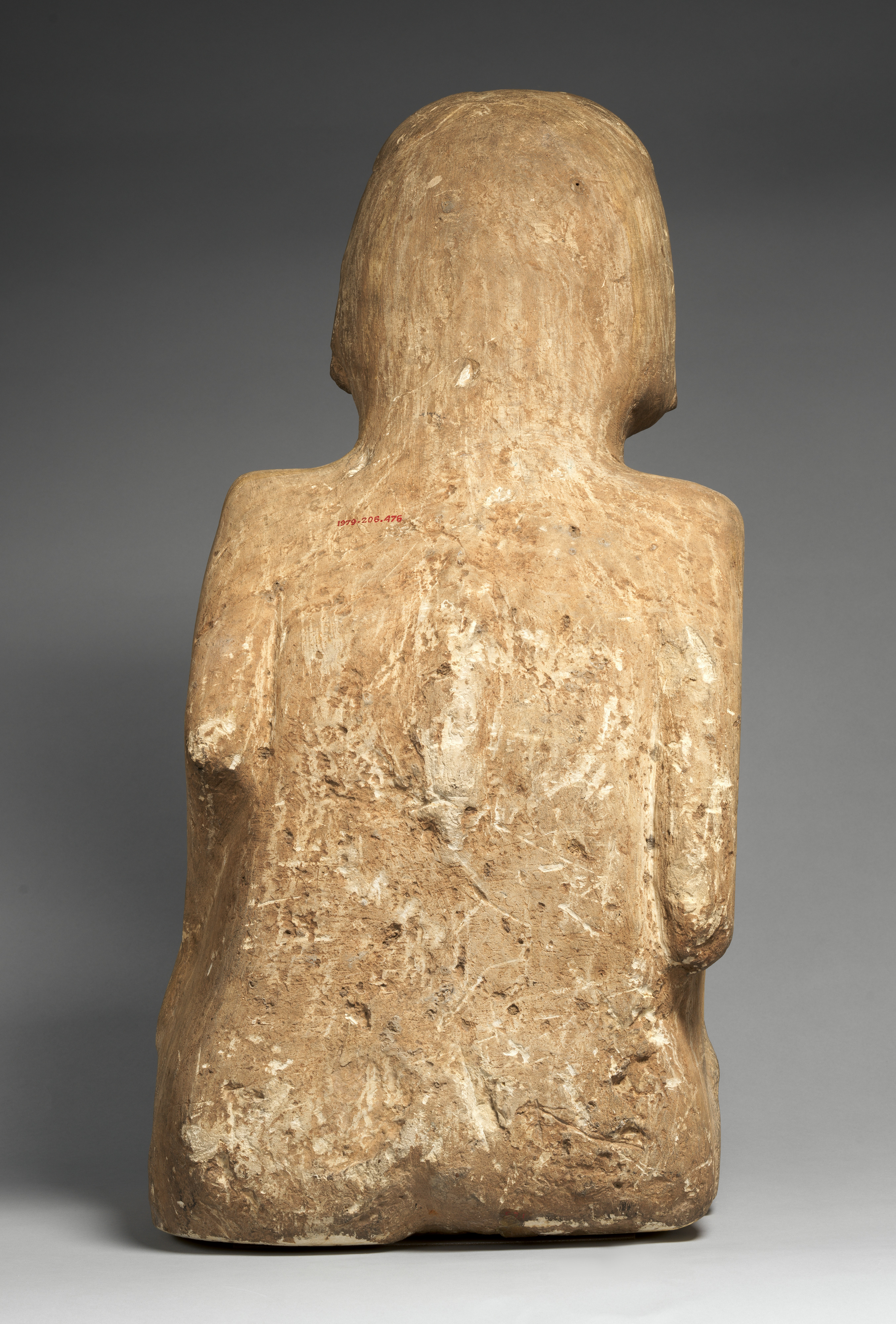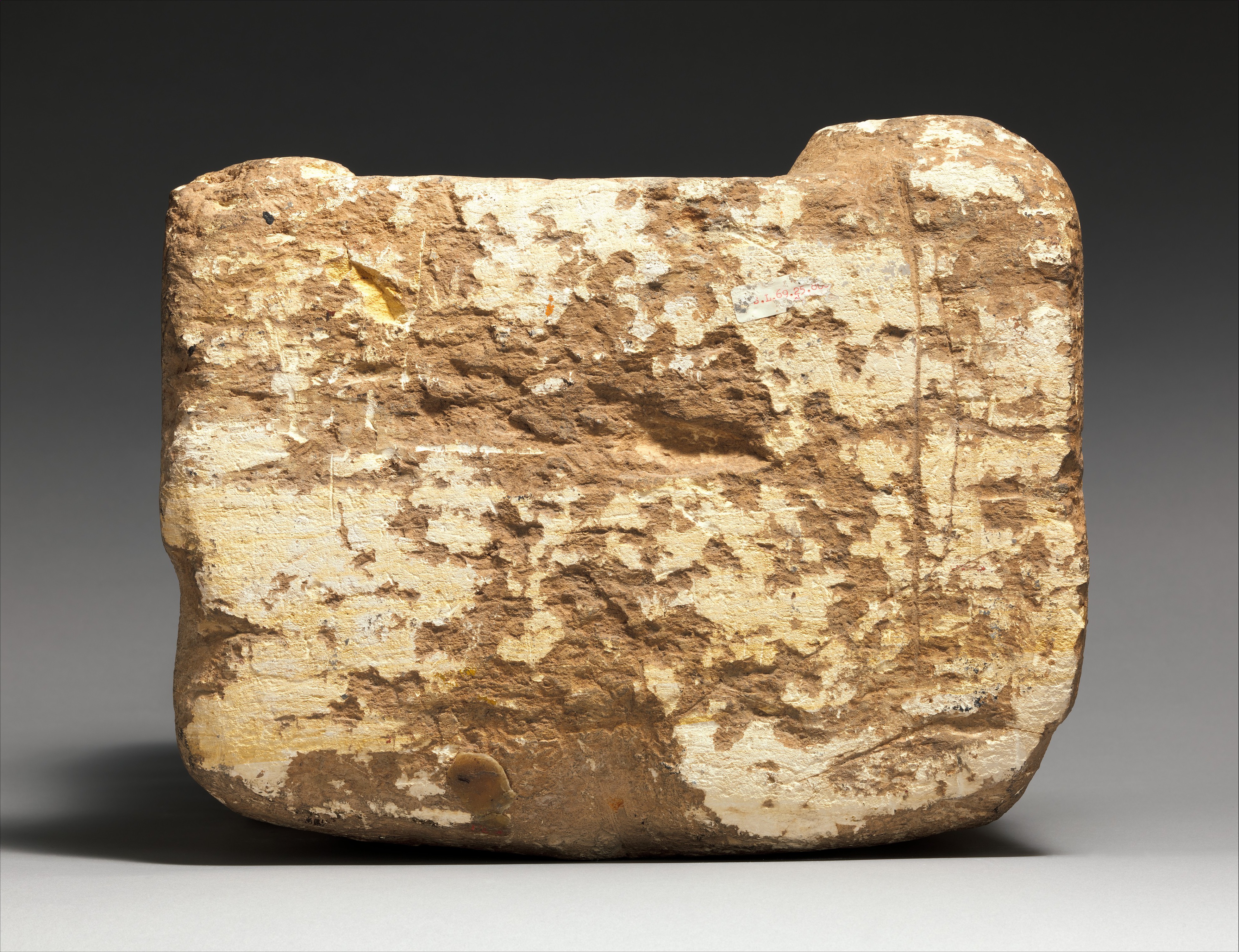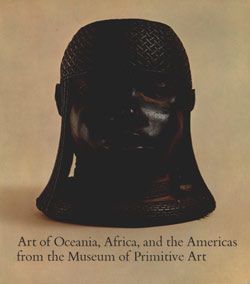Kneeling Male Figure
Not on view
This ancestral figure was one of a male-female pair when discovered in 1895 on the banks of the Duck River in Humphreys County, Tennessee. Such figures played important roles among the more complex Mississippian societies of the Southeast during later precolonial times, when they were the focus of ancestor veneration. The figures, primarily but not exclusively male, were placed and venerated in shrine houses together with the bones of significant ancestors. The figures are known today primarily in durable stone, although examples in wood exist. They are depicted seated and are very compactly—indeed weightily—made, as illustrated by the current example. The jutting chin and well-carved eyebrow ridge accord well with the angles and plains of torso, arms, and legs. The one raised knee distinguishes him as belonging to a special group of figures, in which customarily both knees are on the ground with feet tucked under or crossed. The drawn-up right leg gives the figure an active pose and a more lifelike aspect. When discovered at the end of the nineteenth century, this figure was named Adam and his female counterpart Eve. Eve's present location is unknown.
This image cannot be enlarged, viewed at full screen, or downloaded.
This artwork is meant to be viewed from right to left. Scroll left to view more.


